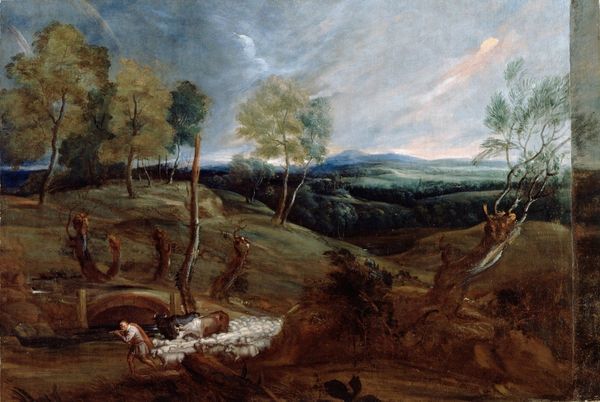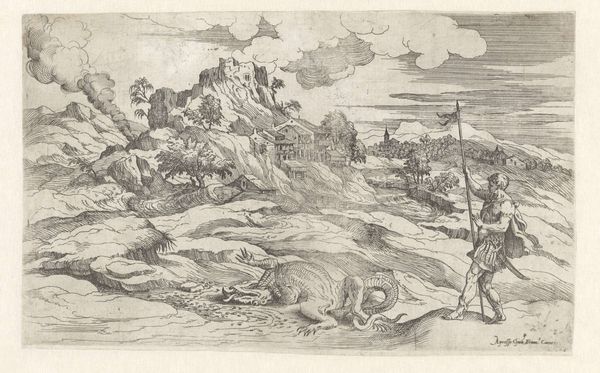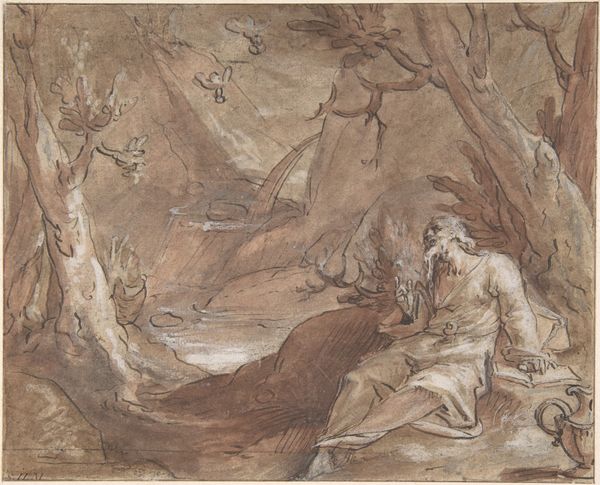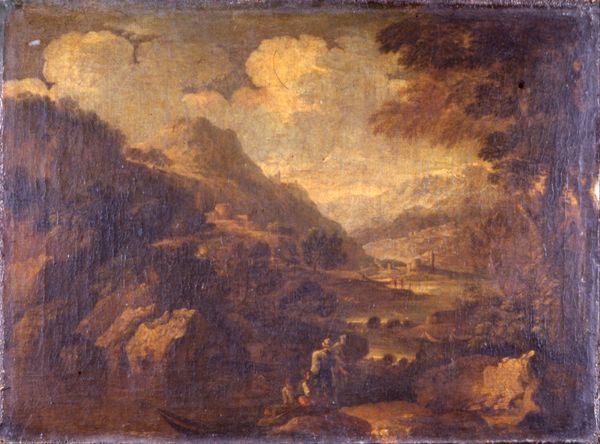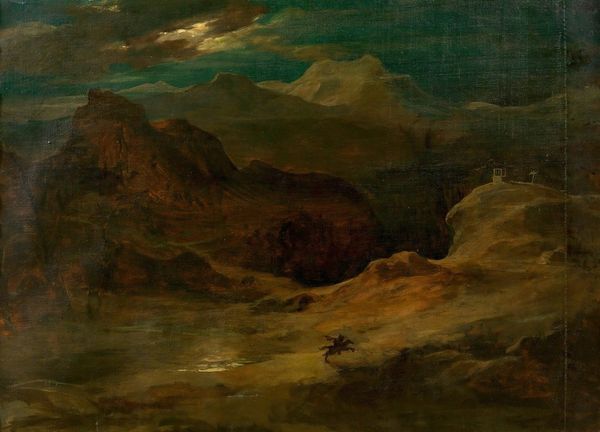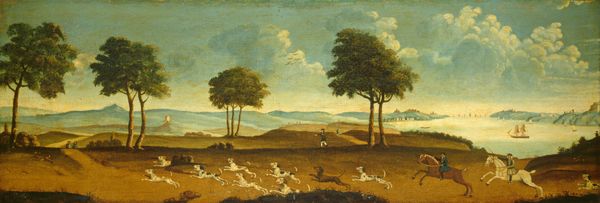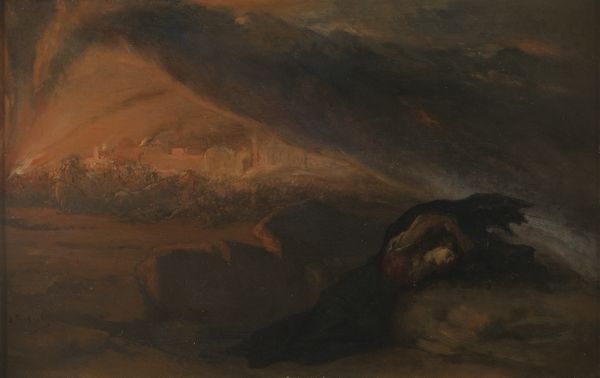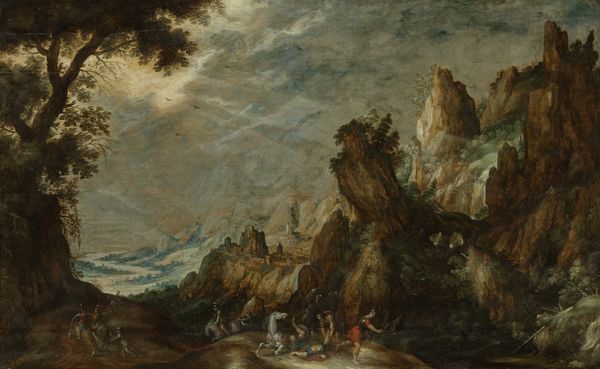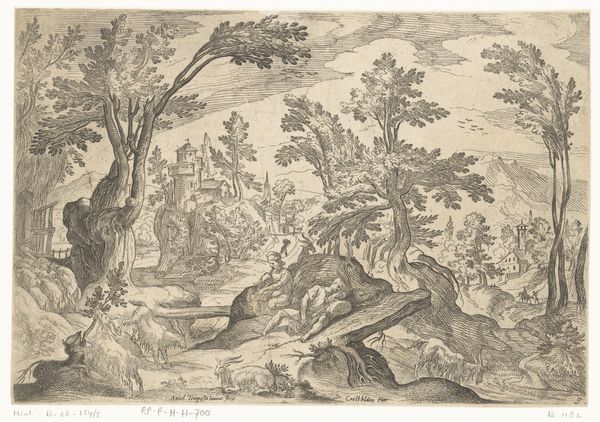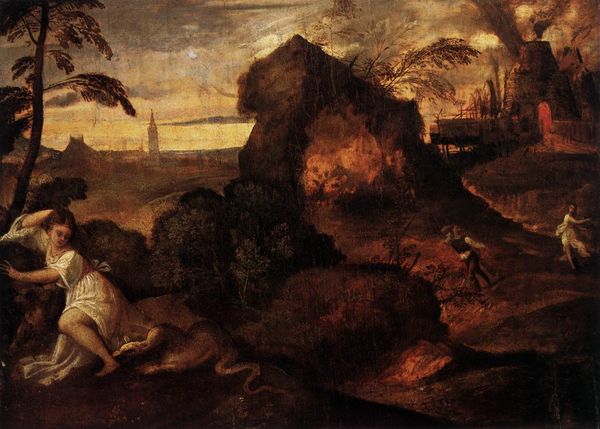
watercolor
#
landscape
#
fantasy-art
#
oil painting
#
watercolor
#
romanticism
#
mythology
#
watercolour illustration
#
prehistoric
#
watercolor
Copyright: Public domain
Curator: Here we have John Martin's watercolor from 1837, titled "The Country of the Iguanodon." Editor: Well, right away, I’m getting a heavy dose of… dread. It’s beautiful, sure, in a dramatic, panoramic kind of way, but there's a premonition about it— a twilight scene hinting at something lost. It feels melancholic. Curator: Yes, that twilight quality is fascinating. Martin, working from early fossil discoveries, painted this fantastical vision. Notice the struggling Iguanodons in the foreground— locked in some primal combat. Editor: They're monstrous, locked together, almost serpentine. And the tiny humans in the mid-ground barely register against that colossal landscape, dwarfed into insignificance! Did Martin intend that commentary, that our struggles are maybe… meaningless in geological time? Curator: Perhaps. Consider the date; 1837. This work reflects not just scientific curiosity about dinosaurs, but also a broader cultural fascination with deep time, and the anxieties of the Victorian era confronting its own mortality, maybe? These creatures aren't presented as magnificent, but as these fading remnants of a lost epoch. Editor: It’s almost a Romantic nightmare! I’m struck by how the Romantic style blends here with prehistoric fantasy—creating this image of primal power and also looming desolation. And that washed out sky? Feels apocalyptic, you know? Curator: Absolutely, it does capture something of the apocalyptic sensibility that permeated much of Romantic art, a cultural memory of extinction, but not quite on the human scale we imagine it today. Editor: What I love is the vulnerability inherent in watercolor - a seemingly ephemeral medium employed to explore lasting geological timescales, really quite potent symbolism, there. Curator: Indeed! We see how science and imagination, infused by this visual and poetic symbolism, can create art that resonates long after the initial discoveries are made, the initial bones are unearthed. Editor: So well put, as a final reflection I would suggest to everyone is this— we stand always at an intersection of our own discovery, where past, present and future collapse and are ultimately reborn. It's this vision Martin's image awakens for me.
Comments
No comments
Be the first to comment and join the conversation on the ultimate creative platform.
